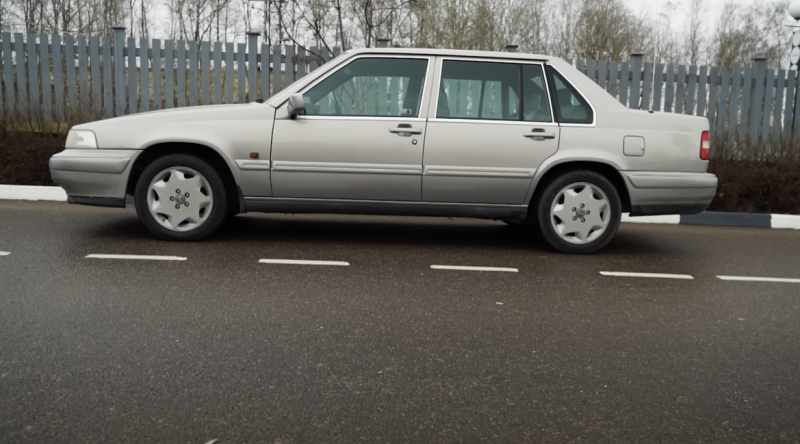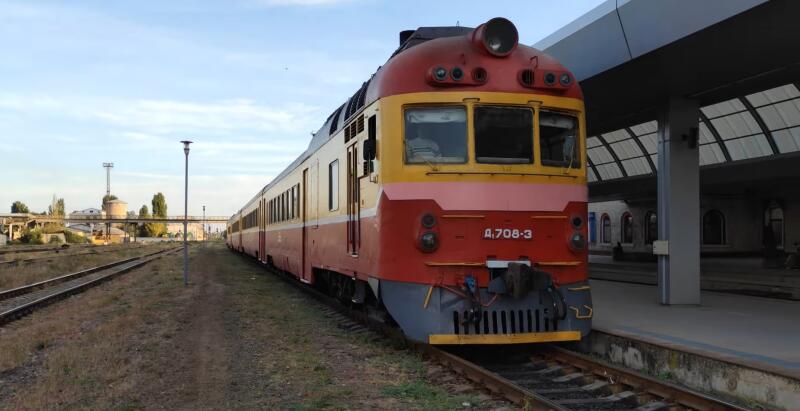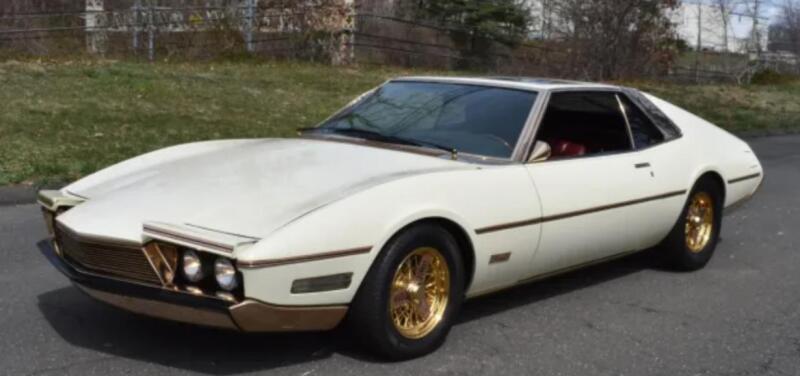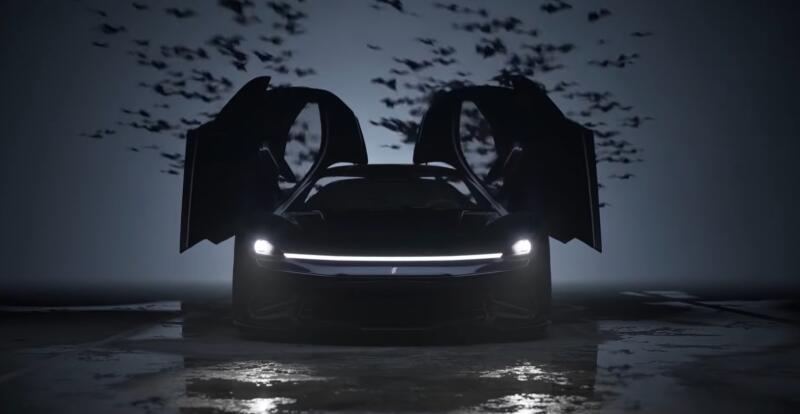Design compared to predecessors
They thought about the car back in the 80s: then its first layout appeared. However, in reality, the design began in the 90s. The scheme of the aircraft is a mid-wing cantilever type. The machine is designed for only one pilot. The installation of a more powerful engine while reducing the weight of the structure made it possible to dramatically improve the aerodynamic qualities of the aircraft. Plus, a new propeller from Germany, thanks to which the aircraft received high speed (including lifting).
 The Su-31 is equipped with a German three-bladed propeller. Photo: YouTube.com
The Su-31 is equipped with a German three-bladed propeller. Photo: YouTube.comAll of the above advantages allowed the aircraft to perform miracles in the sky: to make such aerobatics, which are beyond the power of most foreign "classmates". Not without reason in the West, the Su-31 was called the "Russian acrobatic aircraft."
 Sky acrobatics on the Russian Su-31. Photo: YouTube.com
Sky acrobatics on the Russian Su-31. Photo: YouTube.comThe machine has a large semi-circular canopy, providing the pilot with good visibility. The UTS received an upgraded non-retractable landing gear and a tail wheel with an increased service life. Curious: the fuselage already has two luggage compartments.
Power point
The Su-31 is equipped with the PD M-14PF engine, sometimes the M-14P. In the first case, the motor develops 400 "horses" (294 kW), in the second - 360 hp. With. The unit was designed and manufactured in Voronezh by the Motor Engineering Design Bureau. Motor engineers managed to bring the thrust-to-weight ratio of the engine to one. This means that the machine will be able, like a helicopter, to hover in the air. However, aircraft of the last years of production can be equipped with the new M-9F aircraft engine, which already develops 420 “horses”. The pilot's workplace has practically remained the same.
 In the cockpit it is noticeable: ergonomics are on top. Photo: YouTube.com
In the cockpit it is noticeable: ergonomics are on top. Photo: YouTube.comUnless the angle of inclination of the back of the chair was made at 35 °. It was believed that this would help the athlete pilot to better cope with overloads. Other flight performance characteristics of the Su-31M:
✅ wingspan, length, height - 7,8 m, 6,78 m and 2,78 m
✅ empty weight (take-off average) - 650 kg (780 kg)
✅ horizontal speed (highest) - 380 km / h (450 km / h)
✅ lift, m/min - 1440
✅ gaining height - 4 km
✅ range - up to 290 km
The level of permissible overloads remained the same as that of its predecessors - up to +12/-10 units.
Aircraft modifications
The main one is the Su-31M model. It differs from the basic version by the presence of an ejection seat of the SKS-94 type. This pilot rescue system allows you to land safely at an altitude of 45 m to a maximum (i.e. 4000 m). There are a couple more differences - additional fuel tanks in the wings and an improved cockpit canopy (previously installed from the Su-26M). In the basic version, the car had only a fuselage tank with a volume of 78 liters. For hauls, it was necessary to put an additional tank of 210 liters under the hull. The aircraft with the Su-31X index was exported. Actually, this is an analogue of the Su-31M.
The basic version in documents at the official level was sometimes called the Su-31T.
Later, another modification of the machine appeared - the Su-31U. From "their own kind" it differed retractable landing gear.
First flights and competitions
In the sky, first experimentally, the plane took off in the summer of 1992. Tests have shown that the machine meets all the declared characteristics. However, some downsides have emerged. Test pilot Kairis said the controls were "sluggish", especially in the "transverse channel". We decided: the wingspan should be reduced to 7,8 m, as was the case with its predecessors.
After the first tests, the wing was literally cut off with a hacksaw. And only after making sure that it gave a positive result, they shortened it in the "factory" way.
And a month later, the debut of the TCB took place in France, where the world championship in aerobatics was held in Le Havre. During the competition, the Russian pilot Kairis Y. won the third place, taking the "bronze". Later, he received one of the serial copies for personal use. The pilot seriously upgraded his car "for himself", turning it into a single copy of the aircraft, or EEVS.
 The Su-31M received a new canopy (pilot Kairis in the cockpit). Photo: YouTube.com
The Su-31M received a new canopy (pilot Kairis in the cockpit). Photo: YouTube.comThis idea found its continuation: in the future, when building a custom-made aircraft, the data of the pilot, in particular, his weight, were taken into account. The personal wishes of the pilot, connected, for example, with electronic equipment, or something else, were also taken into account. The aircraft was actively sold abroad. Buyers include the United Kingdom, the United States, Australia and the United Arab Emirates.
 The heart in the sky is drawn by the Su-31. Photo: YouTube.com
The heart in the sky is drawn by the Su-31. Photo: YouTube.com"Along the way" the aircraft was demonstrated to the general public at the Farnborough-92 aerospace show. Subsequently, the Su-31 helped Russian pilots win prizes at the European and World Championships in aerobatics. Luck accompanied and performances overseas. So, in 1996, participants from Russia received the highest awards at the world-class championship held in the USA. And in total, thanks to the Su-31, 330 medals were received. Of these: 156 - gold, 105 - silver and 69 - bronze. The unique aerodynamic characteristics allowed the aircraft to perform aerobatic maneuvers that were not available to other machines of the same class.
 The car literally flies sideways! Photo: YouTube.com
The car literally flies sideways! Photo: YouTube.comOddly enough, but the plane first received an international certificate (1994). Moreover, in the acrobatic category. A similar Russian document was handed over to the creators of the TCB in the following year, 1995. Initially, the car was priced at 190 greenbacks. However, today, given that it is almost impossible to see such an aircraft for sale, the owners of the Su-31 have inflated the cost to 300 thousand dollars. This is exactly what they ask for, for example, for an aircraft manufactured in 2004 with a flight time of 180 hours and an M-14P engine.
What today
Now there are simply no people left in the Sukhoi Design Bureau who are interested in sports topics. As the head of the bureau, Zenkin, noted, engineers should “burn” with these matters, but there are no such cases today. Therefore, work on the creation of new TCBs is not underway. Old cars are also not produced, since the production of engines on which the Su-31 flew and fly has been discontinued. Here another problem has already emerged: if something serious happens to the engine of an aircraft, it will have to be written off, because there are no spare parts. So, for example, in the hangars of the MARZ plant there are three cars waiting for the resolution of the issue of repairs. Similar engines can be made in one of the European countries. However, it is clear that, given today's realities, this is very problematic.
 Possible successor to the Su-31. Photo: YouTube.com
Possible successor to the Su-31. Photo: YouTube.comBut not everything is so bad: there is still hope for recreating a series of training aircraft. Only the development of new models, based on the Su-31, will not be handled by the Sukhoi Design Bureau, but by a private company. And things are moving in this direction: documents for certification have been submitted. We are talking about the sports car "Laros-31" (named after the head of the design bureau Larionov). The aircraft publicly “lit up” in the static section of the MAKS-2019 exhibition. And what about the already released Su-31s? They still fly in Russian and foreign flying clubs, despite their age!










